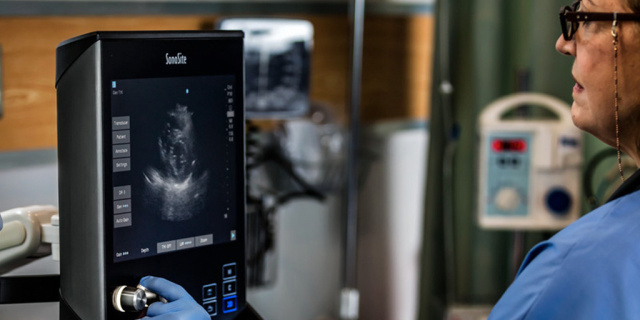

The Economic Times Healthworld recently interviewed Dr Vikas Kohli, an American Board Certified Pediatric Cardiologist with more than 20 years of experience. Based in the Delhi Child Heart Center in New Delhi, Dr. Kohli practices non-invasive, interventional pediatric cardiology and fetal cardiology. He has worked in premier medical centers as well as villages in India’s remotest areas. He spoke about how he uses ultrasound in his practice, and why he prefers Sonosite devices.
Dr. Kohli feels that ultrasonography is an essential part of any ICU.
“I believe that for echocardiography, ultrasound is a highly accurate diagnostic tool,” he explains. “Most complex of lesions can be diagnosed easily and on that basis patients can be sent for surgery without the need for any further diagnosis. So in our field, this remains to be the most important diagnostic imaging technology…Every intensivist and POC physician should have access to this imaging tool and they should undergo proper training to be able to diagnose critical emergencies.”
When it comes to ultrasound systems, Dr. Kohli’s choice is clear.
“I started out with a Sonosite compact ultrasound machine and had several installations in Delhi, Punjab, and other places. Subsequently, I have used all brands and most models…I have found Sonosite systems to be the best for POC diagnosis. While doing interventions in cath lab we need to check the post procedure status or function, and have found the Sonosite M-Turbo to be an excellent machine. With its vascular probe, we use it to get access in patients for cardiac cath, too.”
Dr. Kohli finds Sonosite devices particularly useful in clinics located in remote areas.
“I have also used it for diagnosis in remote hospitals and have diagnosed most complex of lesions and saved lives in several cases with accurate diagnosis with Sonosite machines. I can never forget a case when a neonatologist in a remote area called me and said, ‘My patient is deteriorating rapidly and I can’t find out the cause as the heart was normal yesterday, can you help?’ He showed me images live; while talking to him, using his Sonosite, we diagnosed massive pericardial effusion due to central line insertion and guided him on draining the fluid. The child is still living and normal!”
Dr. Kohli continues to spread the word about the benefits of ultrasound.
“If every intensivist needs to get trained in echo and ultrasound, we need to rewire our training. I am currently training 3-6 pediatricians/neonatologists in a batch regularly and have developed an online portal for the training program (www.pediatriccardiacacademy.com). We look forward to revolutionize this medical field with the optimal utilization of ultrasound technology.”
